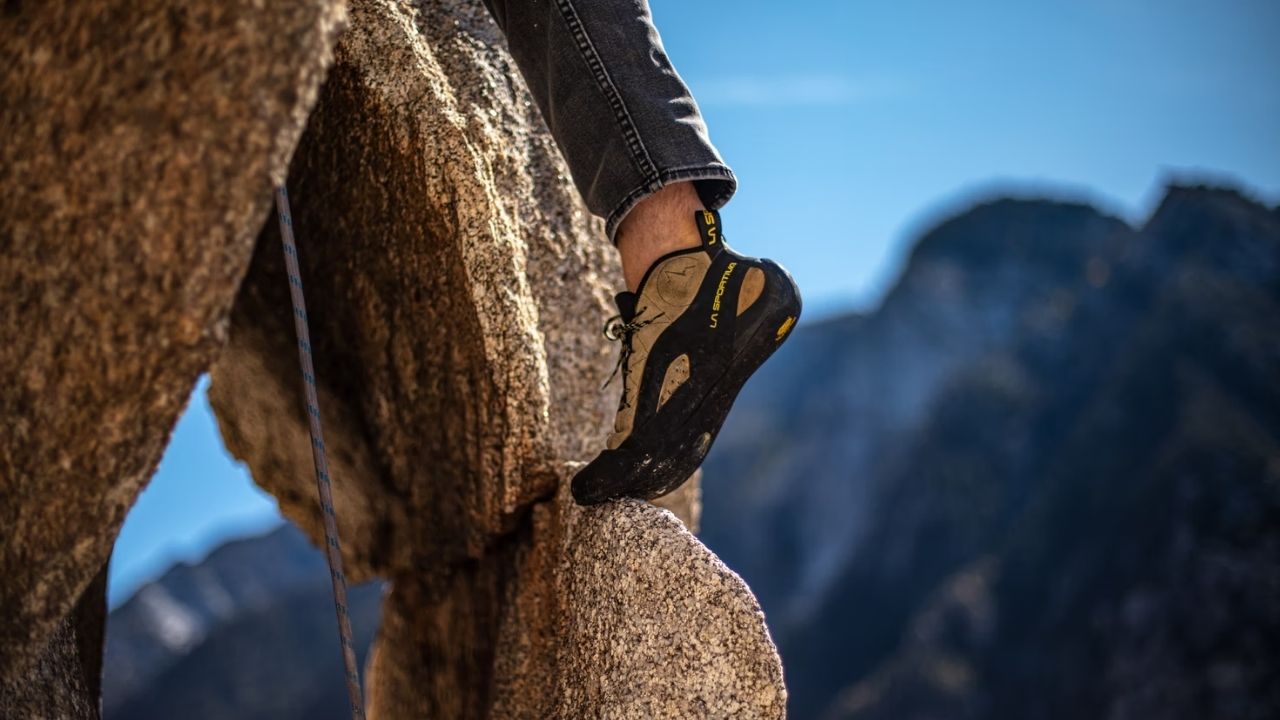After more than a decade of rock climbing, it’s safe to say I’d be on a rock cliff or boulder any day of the week if it were up to me. But as much fun as rock climbing is, it’s not free from danger.
As modern humans, we’re not exactly designed for climbing cliffs and finding the tiny holes and crevices. Hence why we need the proper equipment, including the right shoes.
Recently, I talked about how you should disinfect and take proper care of your climbing shoes. This sparked a number of related questions from you guys, such as if wearing shoes is necessary in the first place.
Let’s answer those questions today.
Are rock climbing shoes necessary?
Rock climbing shoes are not absolutely necessary for climbing, but they’re 100% recommended, and for a good reason. You can climb barefoot outdoors, but it can be dangerous if you’re inexperienced. However, most indoor climbing gyms have a no barefoot climbing rule.
Climbing shoes aren’t exactly comfortable, but they’re super helpful for their purpose. Sure, you can find alternatives to help you get by for some time at the beginner stage. But you’ll need to invest in a good pair of climbing shoes as you progress to more daring routes.
1. Can you wear running shoes for rock climbing?
The biggest difference between running and climbing shoes is that the latter are more rigid, substantially tighter, and with a minimal toe gap. What does that mean?
Technically, you can wear running shoes or training shoes for rock climbing or bouldering as a beginner. Even with less rigidity and a larger toe gap, running shoes function pretty well at such a level. But you’ll need specific climbing shoes for moderate and advanced levels.
See, climbing is all about balance – and to maintain that, you’ll need to push down on the footholds with maximum efficiency. With training shoes, your toes will be farther away from the already small footholds, but climbing shoes offer maximum surface area.
How should rock climbing shoes fit? Are they supposed to be tight?
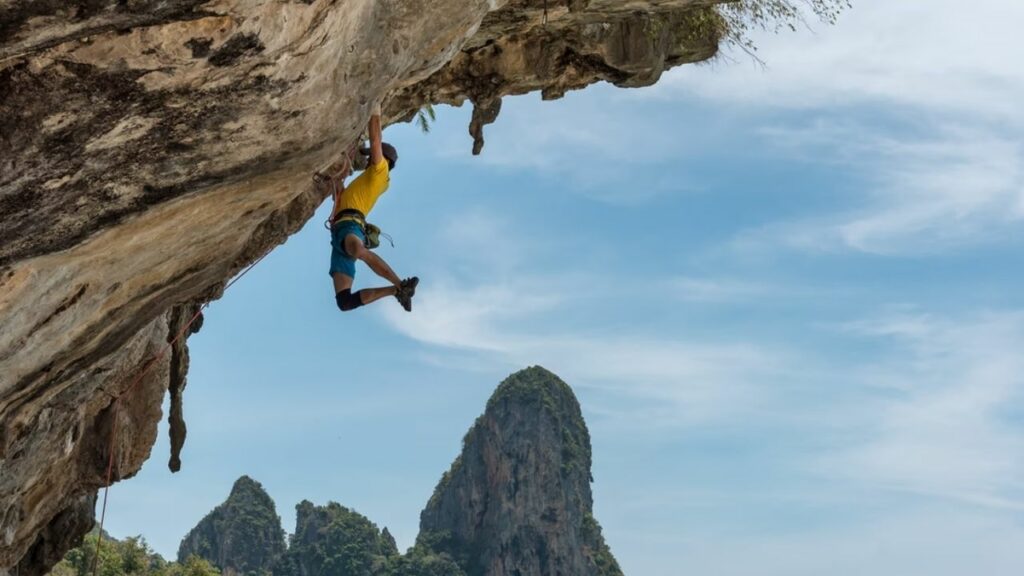
Rock climbing shoes should be tight without being painful. Climbing shoes are designed to “fit your feet” so that there’s almost nothing between your feet and the rock. There shouldn’t be space for your toes or your heels. If there’s air movement, shoes aren’t snug enough.
Climbing shoes aren’t supposed to hurt your feet. If they do, you’re probably wearing them wrong. Newbie climbers often accidentally wear them too tight or get too small of a size.
If your shoes are too tight, you’d be uncomfortable and ultimately unable to properly grab the footholds. And if they’re too loose, the distance between your toes and the rock increases, thus weakening your potential grip.
Why are rock climbing shoes so expensive?
I’m not gonna deny it – climbing shoes are pretty expensive, especially compared to training shoes. But for good reason.
Climbing shoes are expensive because they’re explicitly engineered for maximum performance efficiency on the rock. Manufacturers handcraft, rather than mass production, these shoes with high-grade premium materials, which drives up the cost.
Though I can say for sure that they’re well worth the cost because of the untethered nature of the rock. For example, a standard good quality pair of running shoes lasts 300-400 miles, but climbing shoes of similar quality won’t even last half that time.
1. What to look for when buying rock climbing shoes?
You need to look for three things when buying rock climbing shoes:
- Shoe Type: There are three types of climbing shoes
- First, neutral – they’re like upgraded training shoes. They allow your toes to lie flat and are pretty comfortable. Don’t sell them short though as they’re excellent for multi-pitch climbing.
- The second type is moderate – these shoes have a slightly downturned shape and lie between super comfortable and super-efficient.
- The third type is aggressive. They have a highly downturned shape that puts pressure on your heels to help you grab the holds most efficiently.
- Shoe Fitting: Again, the shoe should fit snug around your foot – as tightly as possible without being painful and uncomfortable.
- Your Budget & Extra Features: Before we go deep into the rabbit hole called “extra features,” first decide your usage and budget. As a beginner, you don’t really need to spend more than $100 to get a good enough pair.
2. Which rock climbing shoes should you buy?
A. La Sportiva Katana Lace Vibram XS Edge Climbing Shoe
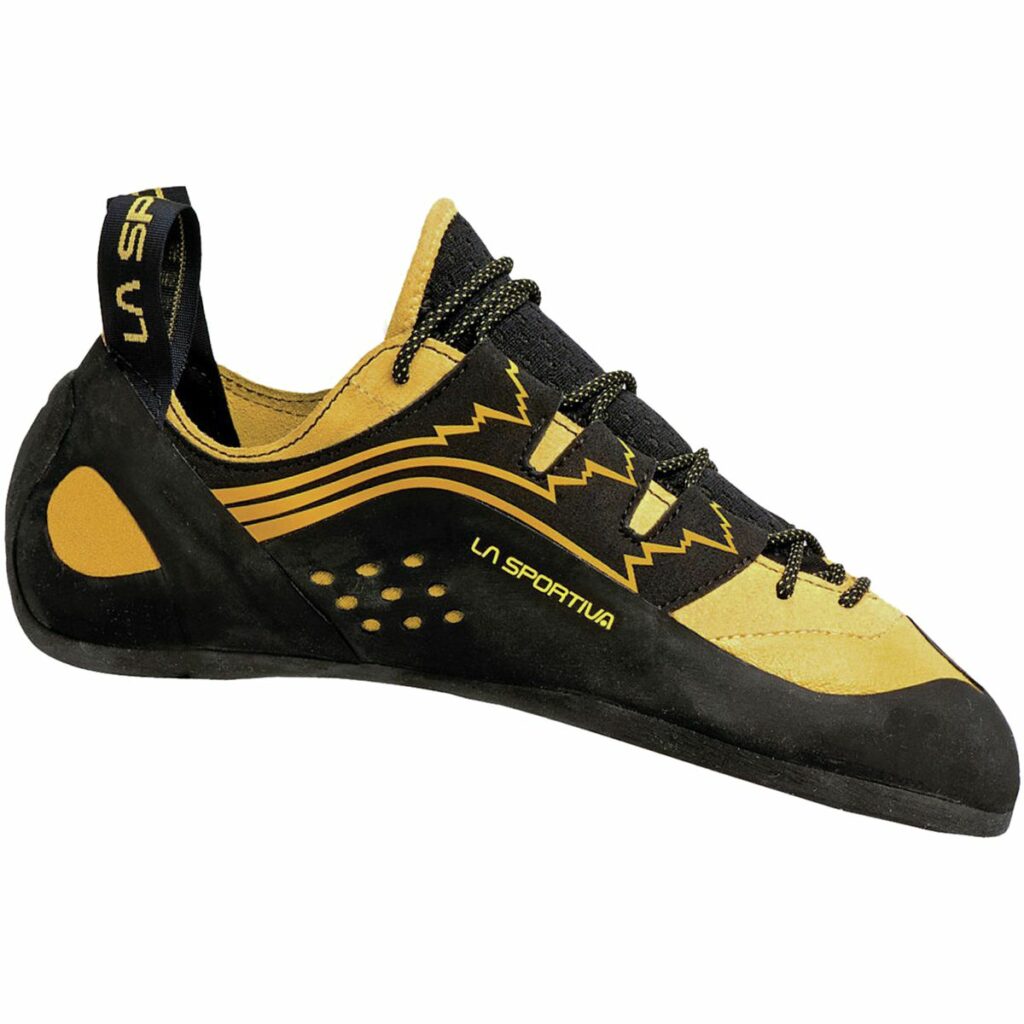
Katana Lace Vibram XS Edge by La Sportiva is the best pair of climbing shoes for beginners. At just under $150, Vibram XS comes in every size with a lined upper leather, ergonomically designed curvature, and a super-efficient lacing system.
The name may be a mouthful, but these are fantastic pair of shoes. The shoe is versatile enough to offer similar performance on slabs, cracks, and face climbs because of the P3 technology. It also comes with the high-performance and hard-wearing Vibram XS grip rubber for that extra support on the rock.
Buy La Sportiva Katana Lace on Backcountry
B. La Sportiva Tarantulace – Best Rock Climbing Shoes On Budget
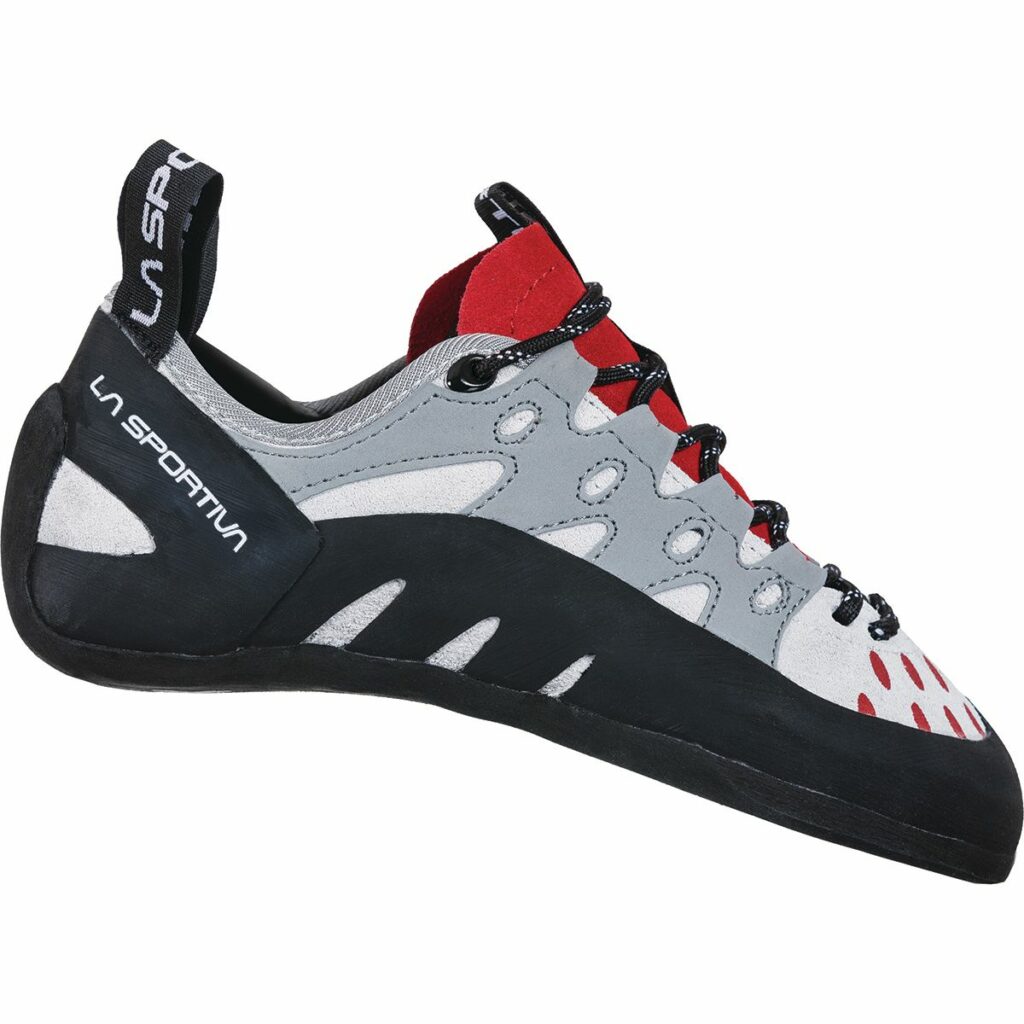
La Sportiva’s Tarantulace is the best budget rock climbing shoe for beginners that only cost $85. They are designed for comfort with a flat profile low curvature. Along with a flexible midsole, it offers a Sticky FriXion rubber.
While FriXion isn’t Vibram XS, it’s more than enough for beginners.
Buy La Sportiva Tarantulace on Backcountry
C. La Sportiva Mythos Eco Climbing Shoe – My Current Pair
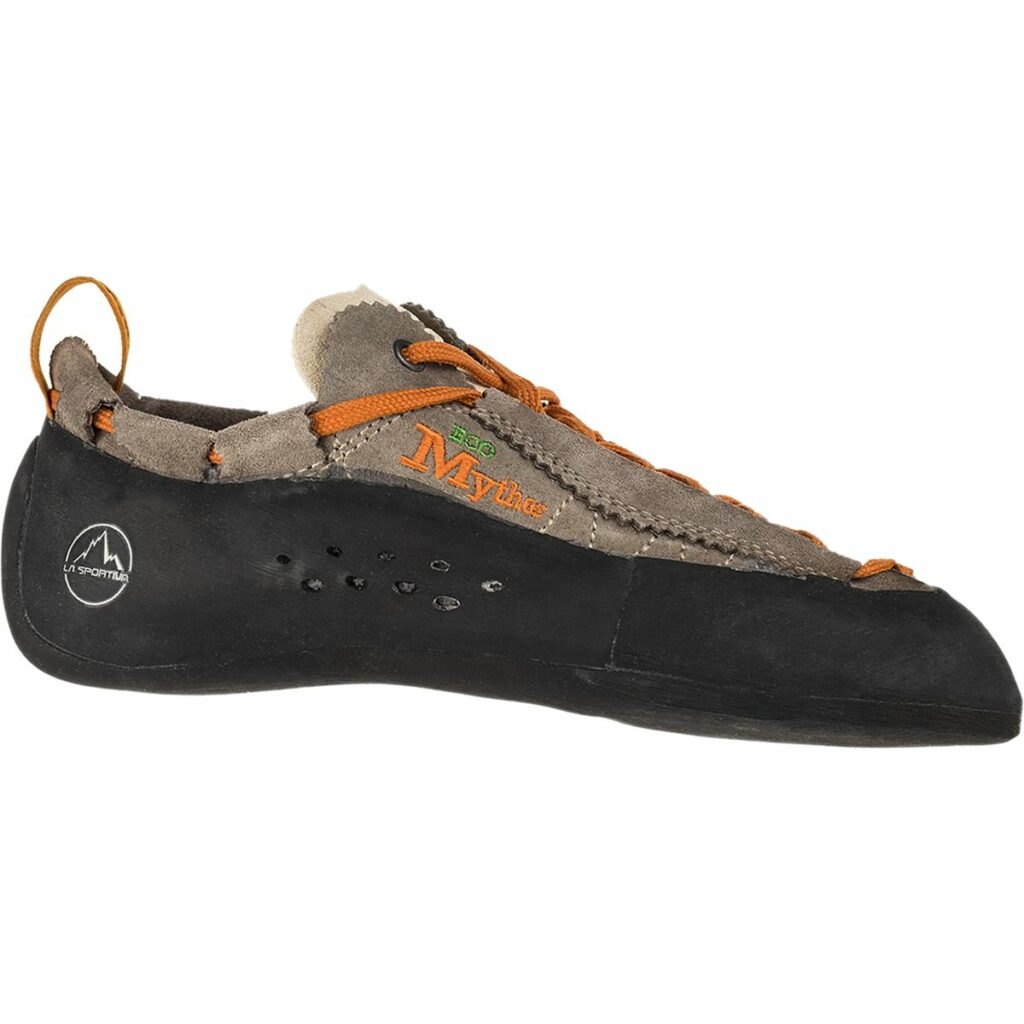
La Sportiva Mythos Eco are my go-to climbing shoes. I’d say they lie somewhere between Tarantulace and Katana Lace, with an unlined biodegradable leather upper and medium-stiff LapsoFlex midsole.
You can also go with the standard La Sportiva Mythos (the non-eco version) since they’re just as good, if not better.
Buy La Sportiva Mythos on Backcountry
Do rock climbing shoes stretch?
Rock climbing shoes do stretch because of the fluctuations in your feet. The shoes will change shape as they stretch when you break them in for the first time. They’ll become “looser” compared to when you bought them simply because our feet change size throughout the day.
Is it ok if rock climbing shoes get wet?
Of course.
Rock climbing shoes are still perfectly fine if they get wet or submerged in water. They’re designed to remain unscathed when drenched in water because of psicobloc (DWS). Some climbing shoes with a leather upper might get minor scratches, but that’s expected.
Though this shouldn’t encourage you to keep them wet all day. There are two reasons why people are so concerned with getting their shoes wet.
First, climbing shoes with leather upper get ruined slowly over time. Second, shoes might end up growing mold if they aren’t kept clean.
In short, it’s OK if they get wet, but make sure that they’re completely dry as quickly as possible.
There you have it: that sums up what you need to know about rock climbing shoes – from their importance to buying factors to consider.
Cheers to sending your next route with your new climbing / training shoes.

